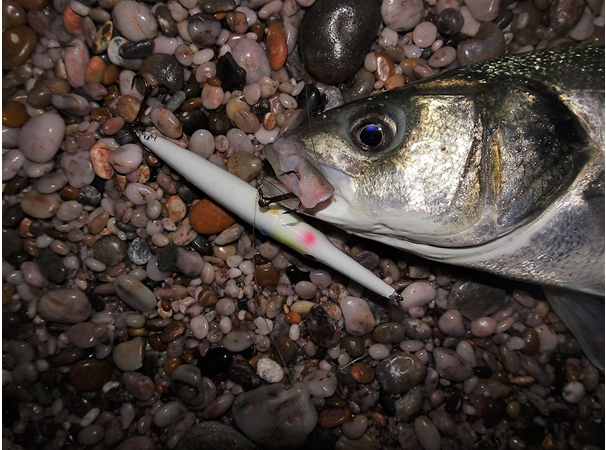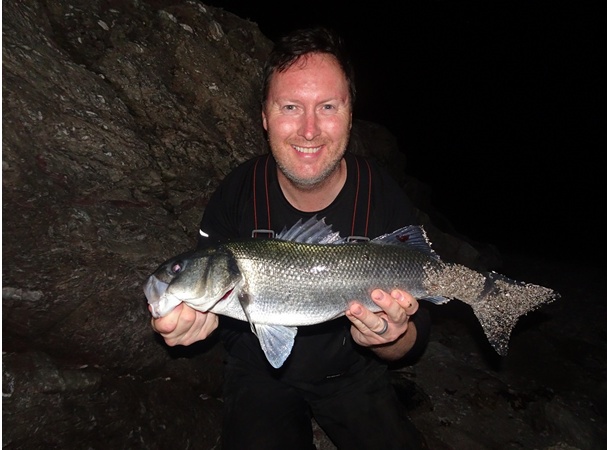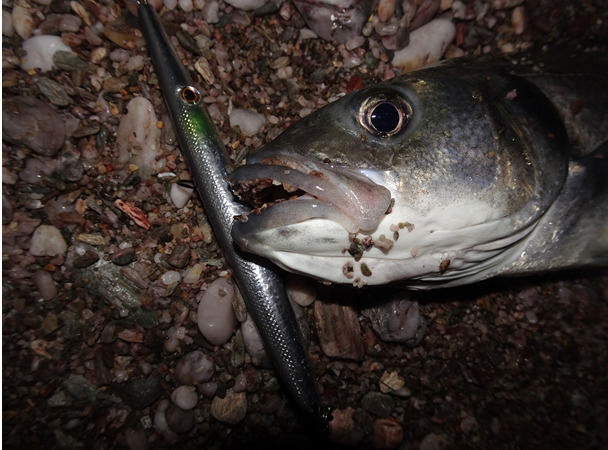My approach to using Needlefish (Part 1 of 2)
Posted by Marc Cowling (South Devon Bass Guide) on 15th May 2019

If there is one type of lure that has revolutionised the way I target bass it is undoubtedly it's needlefish lures. Seemingly innocuous (I would even go so far as to call them insipid), particularly in regards to how they travel through the water,most will have no intrinsic action (wriggling, wobbling) at all when retrieved. Furthermore, with no weight transfer systems incorporated, that in say a hard diving minnow or surface lure will also serve to emit a noticeable rattle, at first glance you could most definitely be forgiven for thinking what all the fuss is about. But as you’ll read, I believe it is their suitableness and understated profile that is the key to their success. In Part 1 of this series, alongside the attributes of a needlefish I will look at how I utilise these marvellous lures, with Part 2 being reserved for describing the type of ground over which I routinely ‘fish’ them.
Intrigued
I was intrigued, especially after reading the reports from some highly respected anglers in The Channel Islands, therefore, my initial strategy was to employ their tactics - which was to cast them up-tide and essentially ‘swing’ them around with or within the current in conjunction with maintaining just enough contact with the lure. The logic behind this being that optimum presentation of an immature fish utilising the velocity of the tide to traverse the coastline can be performed.
Now there are many areas around the beautiful south Devon coastline where the above can be achieved, however, my personal success rate when utilising them in daylight wasn’t anything to write about. A few months later though, everything became clearer when my clients and I started to regularly catch bass, and big bass too, on the level sinking, handcrafted and bespoke ‘Jim’s Lures’ (courtesy of Mr James Lanfear) needlefish.

Works of art that actually work! The Jim’s Lures Needlefish are my weapon of choice.
Attributes
In addition to mimicking a fish (herring, mackerel, launce, sprat, etc) that is taking advantage of the current to tour the coastline, it is my strong believe that the overall shape and movement (or lack of) is very reminiscent to that of a cuttlefish or squid. These theories are augmented by the fact that my diver friends, who will regularly dive at night, tell me that prey fish such as those mentioned above will appear to almost ‘drift’ in a comatose state in darkness. Moreover, the cephalopods mentioned are, conversely, far more active at night and are often found close inshore in huge numbers in the spring in the case of cuttlefish and autumn in regards to the squid.
So what’s this got to do with needlefish I hear you ask? Well, if you cast a needlefish out in daylight (so you can see precisely what is occurring) and proceed to recover it on a moderately paced retrieve you will witness something that appears extraordinarily unexciting to our eyes (a ‘stick of rock’ moving through the water in a straight line!) yet to a bass, it is, at times, simply irresistible. That ‘ghosting’ or ‘gliding’ affect of the needlefish through the water, and often very shallow water at that (as you’ll read in Part 2) is what the level sinking, delicately weighted Jim’s Lures (and I’m sure many others that are built specifically for this purpose but that I haven’t personally used) are designed to do.

A needlefish-caught bass taken in shallow water covering rocks and weed.
How
I am presently conducting all of my fishing with needlefish at night due to the fact that the creatures that I believe they represent are prevalent during this period. But in regards to how I’m actually achieving, and more importantly how my clients are achieving some tremendous catches on them couldn’t be any simpler.
Some lure anglers have a ‘whippy’ casting style and punch the lure out there on a fairly low trajectory, whereas others will slow things down a little, put a bend in the rod and almost ‘lob’ the lure higher in the sky - the needlefish that I am using definitely cast more efficiently on the latter style. Next, ensure that you wind down gently onto the lure as it sinks (at approximately 6-12” per second is ideal) in a horizontal fashion, as this is when a percentage of bass attacks will occur. Then, if you are positioned at sea level, or indeed in the water (no deeper than knee deep) then hold the rod up at between 20-45 degrees to the water’s surface and turn the handle at around one full turn per second. If my stance is a platform of some description above the water line then I will adopt a ‘rod down’ approach instead.
Of course, the retrieve rate can be varied during a session, as the speed at which the lure is ‘swimming’ can be important, especially if the bass are being notoriously fussy. To confirm, if you want the needlefish to remain very close to the surface then a quicker retrieve will be required, but essentially, the way that these lures are cleverly weighted means that they will retain a consistent depth and undeviating trajectory (in terms of direction) all the way to the rod tip -both very important facets to their overall effectiveness.

White, silver and even black models have all produced in darkness.
Advantages
Admittedly, these lures aren’t cheap at around £25, therefore when purchasing them you’ll want to know exactly what they achieve over say, a senko, that looks the same (to us and arguably the bass) in the water and on precisely the same style of retrieve.
First - Distance. There have been numerous occasions where I have asked a client to ‘reach’ a certain underwater feature that a senko just simply cannot. Second - Stability in the air. There are two aspects to this - if there is a headwind or worse, a crosswind, then a senko again, might not get out there, but also, if the wind is especially problematic then the drag it causes on the line will often pull a senko up onto the surface (not always a bad thing it has to be said) but ultimately, you’ll lose that all important feel for what is going at the business end.
Finally - Stability when submerged. If there are waves turning, or there is swell running in the extremely shallow water that most of my bass lure fishing/guiding in darkness is completed then a senko can be thrown around or tossed about too much. If I suspect that this is the case, and again, contact is being lost with a senko, then a needlefish will achieve and maintain that all important steady depth and direction.
Marc Cowling is a highly respected bass fishing guide who specialises in catching and teaching his clients to catch this sublime sporting species on lures from the shore.
Read Part 2.
